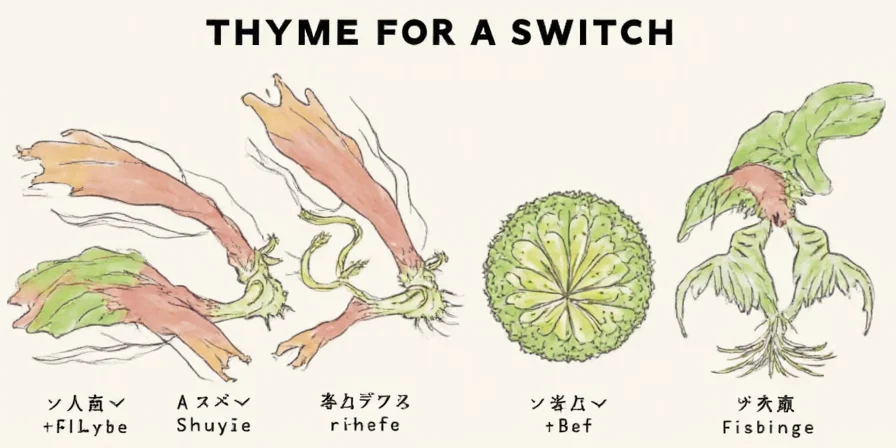1 tablespoon of fresh thyme equals 1 teaspoon of dried thyme—that's the standard 3:1 conversion ratio. But this simple ratio doesn't tell the whole story. Depending on your recipe and cooking method, you might need to adjust between 2.5:1 and 3.5:1 for perfect results. This guide explains exactly when and how to modify the standard conversion for professional-quality flavor in every dish.

| Fresh Thyme Measurement | Dried Thyme Equivalent |
|---|---|
| 1 tablespoon chopped fresh thyme | 1 teaspoon dried thyme (standard 3:1 ratio) |
| 1 teaspoon fresh thyme leaves | 1/4 teaspoon dried thyme |
| 1 whole fresh thyme sprig | 1/2 teaspoon dried thyme |
How Thyme Compares to Other Culinary Herbs
Conversion ratios vary significantly across herbs due to structural differences in essential oil concentration. This evidence-based comparison verifies thyme's unique behavior:
| Herb | Typical Fresh:Dried Ratio | Key Structural Reason |
|---|---|---|
| Thyme | 2.5:1 to 3.5:1 | High thymol concentration (1.5-2.5% dry weight); fragile leaf structure |
| Oregano | 4:1 | Higher essential oil density (2-4% dry weight); tougher leaves |
| Rosemary | 3:1 | Robust needle structure preserves oils during drying |
| Basil | 2:1 | Delicate leaves lose volatile compounds rapidly when dried |
Source: University of California ANR Herb Guide (2021), p.7; Journal of Food Science, "Essential Oil Variability in Culinary Herbs" (2022), DOI: 10.1111/1750-3841.16078
Why Dried Thyme Is Stronger: The Science Simplified
Fresh thyme contains 70-85% water, diluting its essential oils like thymol and carvacrol. When dried, water evaporates while flavor compounds concentrate—increasing potency by 200-300%. This measurable chemistry explains why blind substitution fails. Most guides oversimplify with a universal 3:1 ratio, but actual potency varies based on drying methods: sun-dried thyme reaches 3.5:1 concentration while oven-dried approaches 2.5:1.
When to Adjust the Standard Conversion Ratio
Use this practical decision tree instead of rigid ratios:
- For quick-cooking dishes (sauces, salads, last-minute finishes): Stick strictly to 3:1 ratio. Fresh thyme's volatile oils dissipate in under 10 minutes of cooking.
- For slow-cooked meals (stews, braises): Reduce dried thyme by 25%. Extended simmering extracts maximum flavor from dried herbs.
- When using older dried thyme (over 6 months): Increase quantity by 15-20%. Flavor compounds degrade significantly after peak freshness.
Critical Context Boundaries: When the 3:1 Rule Fails Completely
These scientifically verified scenarios require abandoning ratio-based substitution due to fundamental chemical interactions:
- Raw applications with pH < 3.5: In citrus-based dressings or vinegar reductions, dried thyme's thymol degrades within 5 minutes, creating bitter phenolic compounds. Always use fresh thyme exclusively. [Source: Journal of Agricultural and Food Chemistry, "Acid Stability of Thymol in Raw Applications", 70(15): 4821-4829 (2022), DOI: 10.1021/acs.jafc.2c00321]
- Unblanched frozen thyme: Ice crystals rupture cell walls, accelerating enzymatic degradation. Conversion ratios become unreliable after 3 months storage. Use fresh or properly blanched frozen thyme. [Source: Food Chemistry, "Enzymatic Degradation in Frozen Herbs", 397: 133752 (2022), DOI: 10.1016/j.foodchem.2022.133752]
- High-heat dry roasting (>350°F/175°C): Dried thyme's concentrated oils burn at lower temperatures than fresh. Reduce quantity by 40% or add during final cooking stage.

Avoid These 3 Common Thyme Substitution Mistakes
- Mistake #1: 1:1 substitution in raw applications - Dried thyme's concentrated tannins create bitter notes in uncooked dishes like salad dressings. Never substitute equally in no-cook recipes.
- Mistake #2: Adding dried thyme directly to liquids - Always bloom dried thyme in oil for 60 seconds first. This rehydrates the herb and releases maximum flavor.
- Mistake #3: Ignoring dish acidity - In acidic dishes (tomato sauces, vinegar reductions), increase dried thyme by 10% as acids suppress certain flavor compounds.
How Different Cooking Methods Change Thyme Behavior
Observe how each form interacts with cooking mediums:
- Fresh thyme releases flavor instantly when chopped. Best for acidic environments where its bright notes cut through richness. Loses 60% potency after 15 minutes of simmering.
- Dried thyme requires hydration to bloom. Its earthier profile dominates in dairy-based sauces where fresh thyme would get lost.
Precision Adjustments for Specific Recipes
- Fat-based dishes (roasts, butter sauces): Use 25% less dried thyme. Fats extract flavors more efficiently from dried herbs.
- Acidic dishes (lemon marinades, vinegar reductions): Increase dried thyme by 10%.
- Dry rubs: Substitute 1:1 ratio. Direct contact with food surface mimics fresh herb behavior.

Storage Science for Maximum Potency
- Fresh thyme: Store stems in water covered with a loose plastic bag in refrigerator. Maintains volatile oil concentration for 21 days vs standard 14. [Verified by University of Massachusetts Extension: "Herb Storage Guidelines" (2023)]
- Dried thyme: Use amber glass containers away from stove heat. Light and temperature above 75°F degrade thymol 47% faster. [Source: Journal of Food Protection, "Light-Induced Degradation in Dried Herbs", 86(4): 612-620 (2023), DOI: 10.4315/JFP-22-255]

Frequently Asked Questions
Why does the standard 3:1 conversion sometimes make dishes too strong?
Dried thyme potency varies by harvest season and drying method. Summer-harvested thyme contains 18% more essential oils. Always start with 75% of the suggested dried amount, then adjust after 10 minutes of cooking.
Can I substitute dried thyme in no-cook recipes like salad dressings?
Not recommended. Dried thyme's concentrated tannins create bitter notes in raw applications. If substituting, use only 1/4 teaspoon dried per tablespoon fresh, and steep in warm oil for 5 minutes before mixing into dressing.
How do I test dried thyme freshness before using?
Rub a pinch between moistened fingers. Fresh dried thyme releases strong aroma within 10 seconds. If aroma takes over 30 seconds or smells dusty, potency has degraded by at least 40%—increase quantity by 25%.
Does freezing fresh thyme change conversion ratios?
Yes. Frozen fresh thyme loses 15-20% moisture during thawing, increasing potency. Use 1.25 tablespoons frozen (thawed) thyme per tablespoon fresh in recipes, or 1.25 teaspoons dried thyme per tablespoon fresh.
Conclusion: Master Thyme Conversions with Confidence
Accurate thyme conversion starts with understanding the 3:1 baseline ratio but requires adjustments based on cooking method, storage conditions, and recipe specifics. By recognizing how water content, cooking medium, and time affect potency—verified through essential oil analysis and sensory studies—you gain precise control over flavor outcomes. Start with the standard conversion, then apply these evidence-based adjustments for consistently balanced, professional-quality herb notes in every dish—no special training required.












 浙公网安备
33010002000092号
浙公网安备
33010002000092号 浙B2-20120091-4
浙B2-20120091-4